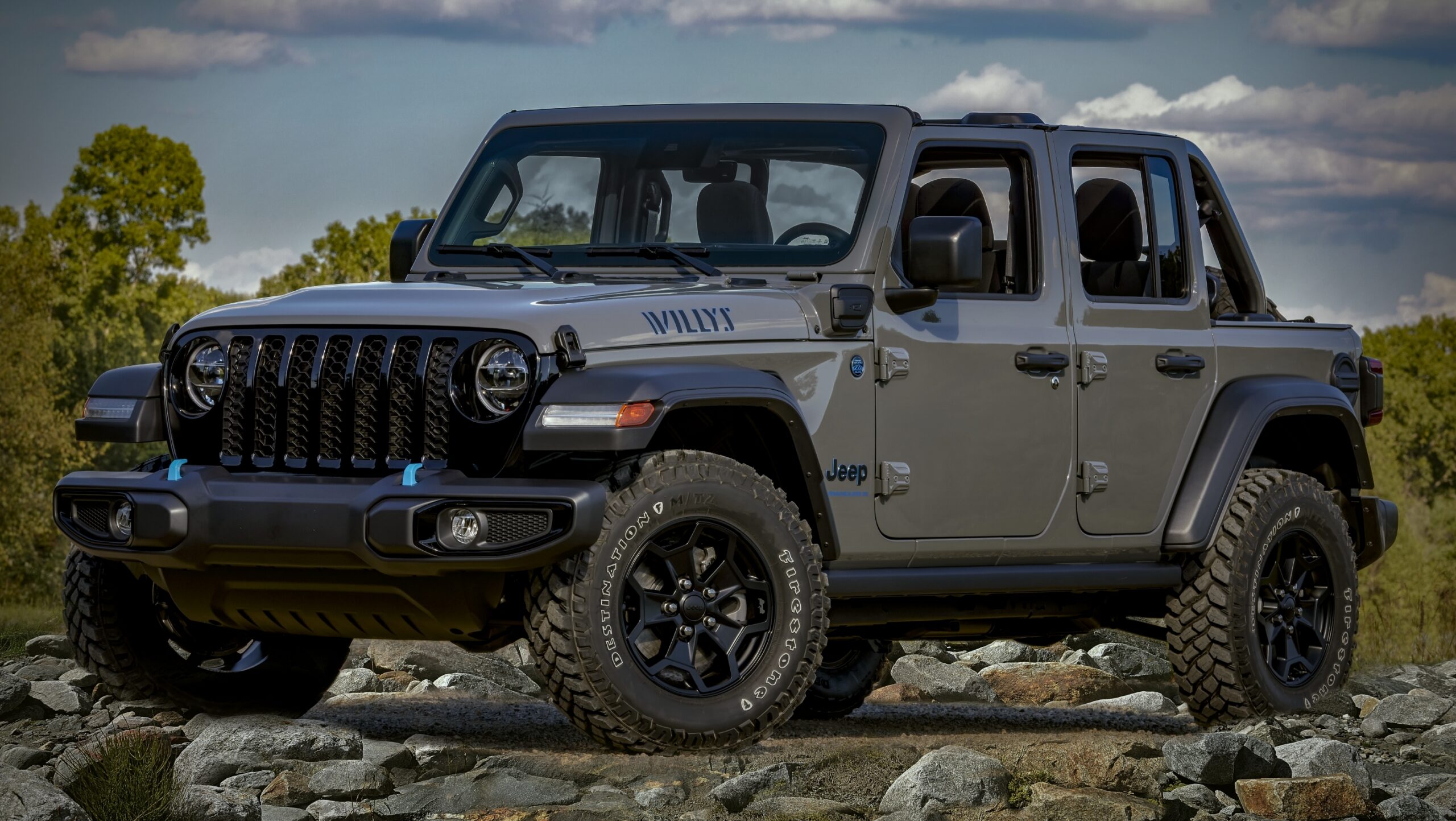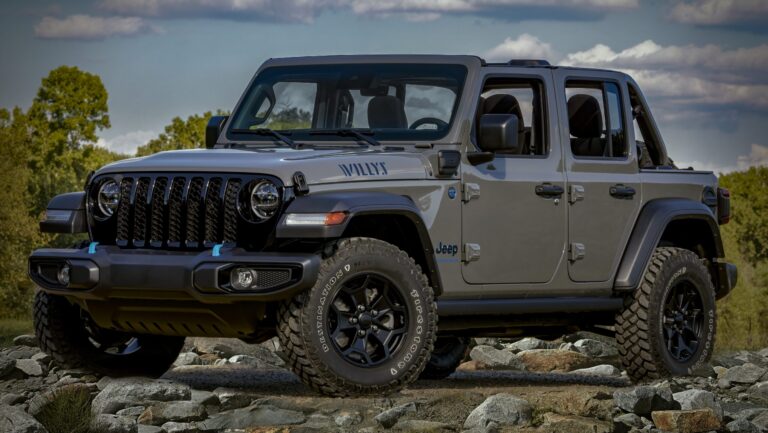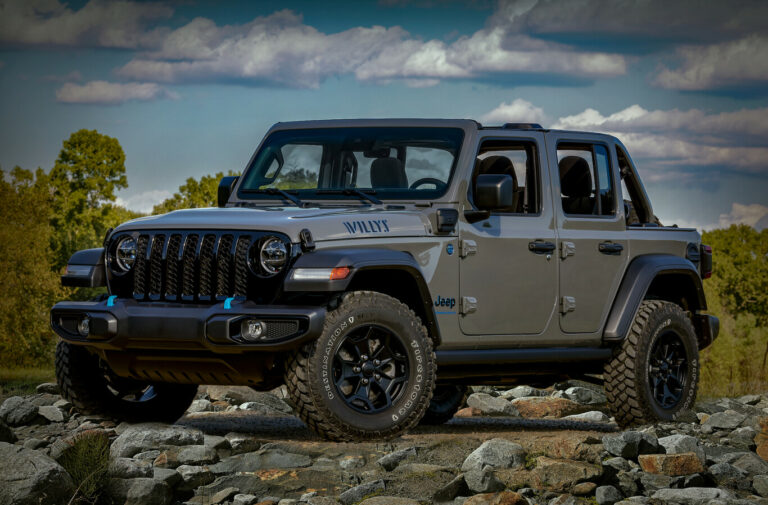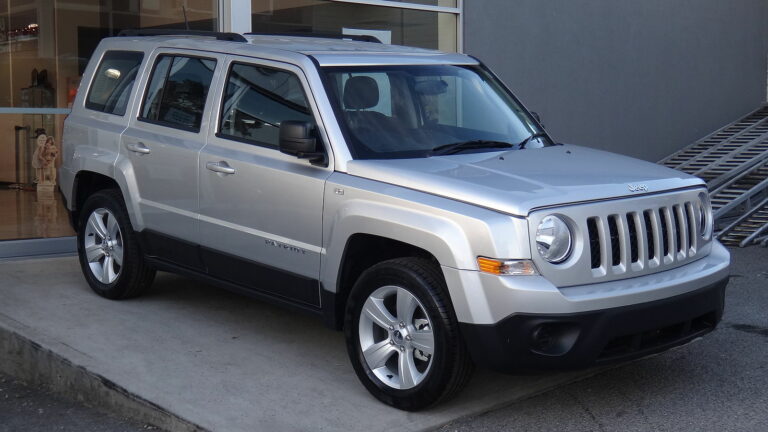Jeep CJ Dana 44 Rear Axle For Sale: The Ultimate Guide to a Legendary Upgrade
Jeep CJ Dana 44 Rear Axle For Sale: The Ultimate Guide to a Legendary Upgrade jeeps.truckstrend.com
For any serious Jeep CJ owner looking to push the boundaries of off-road capability, the phrase "Dana 44 rear axle" resonates with a distinct allure. More than just a collection of gears and steel, the Dana 44 represents a significant upgrade in strength, durability, and performance over the stock axles typically found in CJs. Whether you’re planning on tackling tougher trails, running larger tires, or simply seeking peace of mind, acquiring a Dana 44 rear axle for your CJ is a pivotal step. This comprehensive guide will delve into everything you need to know about finding, evaluating, purchasing, and installing this iconic piece of off-road hardware.
Why the Dana 44? Understanding its Appeal for CJ Owners
Jeep CJ Dana 44 Rear Axle For Sale: The Ultimate Guide to a Legendary Upgrade
The Dana 44 axle has earned its legendary status for good reason. Compared to the factory-installed Dana 35 or the AMC 20 (often found in CJs), the Dana 44 offers a substantial increase in robustness. Its key advantages include:
- Larger Ring Gear: The Dana 44 boasts a larger ring gear diameter (8.5 inches vs. 7.5 or 7.625 inches), which translates directly into greater strength and resistance to breakage under heavy loads or shock.
- Stronger Axle Shafts: While stock Dana 44 shafts are generally stronger than their counterparts, they also open the door to a wider range of aftermarket chromoly axle shaft upgrades, further enhancing durability.
- Robust Housing: The axle housing itself is typically thicker and more resilient, better able to withstand the torsional forces and impacts encountered during aggressive off-roading.
- Better Gearing Options: A vast array of gear ratios is available for the Dana 44, allowing CJ owners to fine-tune their drivetrain for optimal performance with larger tires or specific off-road disciplines.
- Wider Aftermarket Support: Due to its popularity, the Dana 44 enjoys unparalleled aftermarket support, meaning parts, lockers, and upgrade components are readily available.

For CJ owners, upgrading to a Dana 44 addresses common weaknesses of stock axles, such as bent axle tubes, twisted shafts, or broken ring and pinion gears, especially when running tires larger than 33 inches or engaging in demanding rock crawling. It’s not just an upgrade; it’s an investment in your Jeep’s longevity and capability.
Identifying the Right Dana 44 for Your CJ
While the "Dana 44" name is consistent, not all Dana 44s are created equal, especially when considering a swap into a Jeep CJ. The key is to find an axle that minimizes the amount of fabrication and modification required for a successful installation.
1. Original CJ Dana 44s (The Unicorns):
Some late model CJ-5s, CJ-7s, and CJ-8 Scramblers (particularly those with specific options like the Trac-Lok limited-slip differential) came from the factory with a rear Dana 44. These are the most direct bolt-in solutions as they have the correct width, spring perch locations, and bolt patterns. However, they are exceedingly rare and often command premium prices.
2. Donor Axles (The Practical Choices):
Most CJ Dana 44 swaps involve sourcing an axle from another vehicle. Here are some common donor options and their considerations:
- International Harvester Scout II Dana 44: This is perhaps the most popular and well-regarded donor axle for CJs. It has a similar width (around 58-60 inches WMS-to-WMS, depending on year) and often features a 5×5.5" bolt pattern (common on CJs). Modifications typically involve relocating spring perches, shock mounts, and potentially addressing brake differences.
- Ford F-150/Bronco Dana 44 (Front Axle): While primarily a front axle, some enthusiasts adapt these for rear use due to their strength. However, this involves significant fabrication to convert it to a rear axle configuration, including removing steering knuckles and adding traditional rear axle components.
- Jeep Grand Cherokee ZJ/XJ Cherokee Dana 44: Some rare ZJs (V8 models with tow packages) and XJs (manual transmission models, especially the ’87-90 years) came with Dana 44 rear axles. These are often narrower than ideal for CJs and may require custom axle shafts or significant bracket relocation.
- Jeep Wrangler TJ/LJ (Rubicon) Dana 44: These are excellent axles in terms of strength and disc brakes, but they are significantly wider (around 60-63 inches WMS-to-WMS) and feature a 5×4.5" bolt pattern. Swapping one into a CJ would require extensive modifications, including wheel adapters/spacers or a matching front axle swap, and serious fender well work.
- Jeep Wrangler JK (Rubicon) Dana 44: Even wider (around 65-66 inches WMS-to-WMS) and with a 5×5" bolt pattern. While incredibly strong, a JK Dana 44 swap into a CJ is a highly involved, custom fabrication project best left to experienced builders.
Key Considerations When Choosing:
- Width (WMS-to-WMS): Measure your current CJ’s rear axle width from wheel mounting surface to wheel mounting surface. Aim for a donor axle that is close to this measurement to avoid tire clearance issues or the need for wheel spacers.
- Bolt Pattern: CJs typically use a 5 on 5.5-inch bolt pattern. Matching this will save you the hassle of changing wheel bolt patterns or using adapters.
- Gearing: If your front axle is a Dana 30 or Dana 27, ensure the new Dana 44 rear axle has the same gear ratio, or plan to re-gear both axles simultaneously.
- Brakes: Decide if you want to stick with drum brakes or upgrade to disc brakes. Many donor Dana 44s come with drums, but disc brake conversion kits are widely available.
- Locker/LSD: Some donor axles might come with a factory limited-slip differential (LSD) or even an aftermarket locker. This can be a bonus but shouldn’t be the primary deciding factor.
What to Look For When Buying a Used Dana 44 Rear Axle
Buying a used axle requires a careful inspection to ensure you’re getting a sound component. A thorough visual check and asking the right questions can save you significant headaches and costs down the line.
- Housing Integrity:
- Bends/Warps: Use a straight edge or string line to check if the axle tubes are straight. A bent housing can lead to premature bearing wear and alignment issues.
- Cracks: Inspect around weld points (spring perches, shock mounts) and the differential housing for any hairline cracks or signs of previous repairs.
- Rust/Corrosion: While surface rust is normal, excessive pitting or structural rust can be problematic.
- Axle Shafts:
- Splines: Check the splines on the ends of the shafts for twisting or excessive wear.
- Straightness: Roll the shafts on a flat surface if possible, or visually inspect for bends.
- Bearing Surfaces: Check the bearing surfaces for pitting or grooves.
- Differential Condition:
- Fluid: Ask about the last time the fluid was changed. If possible, remove the cover to inspect the gear oil. Burnt-smelling or milky fluid indicates problems.
- Gears: Look for chipped, pitted, or excessively worn teeth on the ring and pinion gears. Check for proper backlash (play between gears).
- Locker/LSD: If equipped, verify its functionality.
- Brake Components:
- Condition: Inspect brake shoes/pads, drums/rotors, calipers, and wheel cylinders for wear, leaks, or damage. Assume you’ll need to rebuild or replace these.
- Backing Plates: Check for bends or severe rust.
- Mounting Points:
- Spring Perches: Check their condition and position. You’ll likely need to cut off and re-weld these to match your CJ’s spring spacing.
- Shock Mounts: Similar to spring perches, these will likely need relocation.
- Bearings and Seals: While you can’t fully inspect inner bearings, check for obvious leaks around the axle seals. Budget for replacing all bearings and seals as part of the rebuild.
- U-Joints (if applicable on full-float): Check for play or rust.
The Buying Process: Where to Find Your Dana 44
Finding a Dana 44 can be a scavenger hunt, but several avenues can lead to success:
- Online Marketplaces: Websites like eBay, Craigslist, and Facebook Marketplace/Groups (especially dedicated Jeep/off-road groups) are prime hunting grounds. Be wary of deals that seem too good to be true and always try to inspect in person.
- Specialized Jeep Forums and Classifieds: Forums like Pirate4x4, JeepForum, and CJ-specific sites often have classified sections where enthusiasts sell parts. These tend to be more knowledgeable sellers and buyers.
- Junkyards/Salvage Yards: A traditional source for used auto parts. Call ahead to inquire about Dana 44 availability from Scout IIs, older Fords, or specific Jeep models. Prices can be lower, but condition is often "as-is."
- Off-Road Shops and Axle Builders: Some shops specialize in building or sourcing axles for swaps. They might have reconditioned Dana 44s for sale, often at a higher price but with a guarantee of quality.
- Word-of-Mouth: Let your local Jeep club or off-road community know you’re looking. Someone might have one sitting in their garage.
When negotiating, always factor in potential shipping costs if buying remotely. Local pickup is always preferred for inspection.
Installation and Integration into Your CJ
Swapping a Dana 44 into your CJ is rarely a direct bolt-in procedure, especially if you’re using a donor axle. It typically involves:
- Removing Original Axle: Disconnect brake lines, driveshaft, shock absorbers, and spring U-bolts.
- Fabrication:
- Spring Perches: The most common modification. You’ll need to cut off the old perches from the donor axle and weld on new ones at the correct width for your CJ’s leaf springs. Proper alignment is critical.
- Shock Mounts: Relocate or fabricate new shock mounts to match your CJ’s suspension geometry.
- Brake Lines: Adapt or replace brake lines to connect the new axle’s brakes to your CJ’s system. Consider upgrading to stainless steel braided lines.
- Driveshaft Length: The new axle’s pinion angle and overall length might require modifying or replacing your rear driveshaft.
- Parking Brake: Ensure the parking brake system can be integrated.
- Re-gearing (If Necessary): If the new rear axle’s gear ratio doesn’t match your front axle, you must re-gear both axles to the same ratio. Failure to do so will cause severe drivetrain binding and damage, especially in 4WD.
- Assembly and Bleeding: Install axle shafts, fill with gear oil, bleed brakes, and perform final checks.
- Professional vs. DIY: While many DIY enthusiasts tackle this, a professional off-road shop with fabrication experience is recommended if you’re not comfortable with welding, cutting, and critical measurements.
Upgrades and Customization for Your Dana 44
Once you have your Dana 44, the customization possibilities are extensive:
- Aftermarket Axle Shafts: Chromoly shafts are a popular upgrade, significantly increasing strength over stock shafts.
- Lockers: Full lockers (e.g., Detroit Locker, Spartan Locker) provide maximum traction, while selectable lockers (e.g., ARB Air Locker, OX Locker, Eaton E-Locker) allow you to engage/disengage traction on demand.
- Disc Brake Conversions: Convert from drum brakes to disc brakes for improved stopping power and easier maintenance.
- Heavy-Duty Differential Covers: Thicker covers protect the differential from impacts.
- Gearing Changes: Optimize your gearing for tire size and desired performance.
- Full-Float Conversion: For ultimate strength and safety, convert to a full-float design, which supports the vehicle’s weight on the axle housing, not the axle shaft.
- Trussing: Welding a truss to the axle housing can prevent bending, especially under extreme off-road conditions.
Practical Advice and Actionable Insights
- Measure Everything, Twice: Axle width, spring perch spacing, and driveshaft length are critical. Do not guess.
- Budget for More Than Just the Axle: Factor in new bearings, seals, brake components, gear oil, potential re-gearing, driveshaft modification, and fabrication costs (welding supplies, cutting tools, etc.).
- Be Patient: Finding the "perfect" Dana 44 can take time. Don’t rush into a purchase.
- Verify Information: If buying remotely, ask for detailed photos, videos, and specific measurements. Request proof of the axle’s origin if possible.
- Consider a Rebuild: Unless the axle comes from a reputable builder with a recent rebuild, assume you’ll need to tear it down, inspect components, and replace wear items like bearings and seals.
Estimated Price Table for Jeep CJ Dana 44 Rear Axle For Sale
Prices for Dana 44 axles vary significantly based on condition, included components, location, and demand. The table below provides a general estimated range.
| Axle Type/Condition | Estimated Price Range (USD) | Key Features/Considerations |
|---|---|---|
| CJ Original Dana 44 | $800 – $2,500+ | Rare, direct bolt-in. Often comes with drum brakes. High demand. Price depends heavily on condition and included diff. |
| Scout II Dana 44 | $400 – $1,200 | Common swap. Requires spring perch/shock mount relocation. Often 5×5.5" bolt pattern. Good strength. |
| TJ/LJ Rubicon Dana 44 | $800 – $2,000 | Strong, often includes locker/disc brakes. Wider, requires significant modification (width, bolt pattern conversion). |
| JK Rubicon Dana 44 | $1,500 – $3,000+ | Very strong, disc brakes. Much wider, significant fabrication required. Best for extreme builds. |
| Bare Dana 44 Housing | $200 – $500 | Requires all internal components (gears, shafts, diff), bearings, brakes. Best for custom builds. |
| Complete Used Dana 44 | $500 – $1,500 | Includes shafts, differential, brakes. Condition varies. Assume rebuild is needed. |
| Rebuilt/Custom Dana 44 | $1,500 – $4,000+ | Professionally rebuilt, often with upgrades (new gears, shafts, locker). Higher price, but ready to install. |
Note: These prices are estimates and can fluctuate wildly based on market demand, region, and the specific condition or included upgrades (e.g., locker, disc brakes, chromoly shafts).
Frequently Asked Questions (FAQ)
Q: Can I just bolt a Dana 44 into my CJ?
A: Rarely. While original CJ Dana 44s are bolt-in, most donor axles (like a Scout II Dana 44) will require cutting off and re-welding spring perches and shock mounts, and potentially modifying brake lines and the driveshaft.
Q: What’s the best Dana 44 for a CJ?
A: The "best" depends on your budget and desired level of modification. For a relatively straightforward swap, a Scout II Dana 44 is often preferred due to its similar width and bolt pattern. For maximum strength and willingness to do extensive fabrication, a TJ or JK Rubicon Dana 44 might be considered.
Q: Do I need to re-gear my front axle if I install a new Dana 44 rear?
A: Yes, absolutely. If the new rear Dana 44 has a different gear ratio than your front axle, you must re-gear your front axle to match. Running different ratios in 4WD will cause severe damage to your drivetrain.
Q: How much does a Dana 44 swap typically cost in total?
A: Beyond the axle itself, budget for an additional $500 – $2000+ for parts and labor, depending on whether you DIY or hire a shop. This includes new bearings, seals, brake components, gear oil, possibly re-gearing, driveshaft modification, and fabrication materials.
Q: What’s the difference between a semi-float and full-float Dana 44?
A: Most Dana 44s (including those found in CJs and Scouts) are "semi-float," meaning the axle shaft supports both the vehicle’s weight and transmits power to the wheel. A "full-float" axle supports the vehicle’s weight on the axle housing, with the axle shaft only transmitting power. Full-float designs are generally stronger and safer, as a broken axle shaft won’t cause the wheel to detach. Full-float Dana 44s are rare from the factory but can be achieved with aftermarket conversion kits.
Conclusion
Acquiring and installing a Dana 44 rear axle is one of the most impactful upgrades you can make to a Jeep CJ. It transforms your vehicle from a capable off-roader into a true workhorse, ready to tackle more aggressive terrain with confidence. While the process requires careful planning, diligent research, and potentially significant fabrication, the reward of a stronger, more reliable drivetrain is immeasurable. By understanding the different types of Dana 44s available, knowing what to look for when buying used, and preparing for the installation process, you can successfully equip your beloved CJ with the legendary strength it deserves, ensuring countless more adventures on and off the trail.




